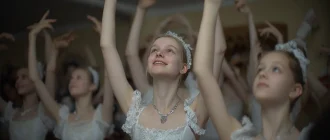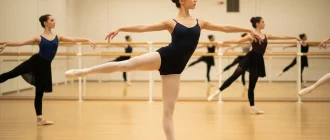Are you searching for the most prestigious ballet competitions in Europe? Our guide captures the essence of each event, from the esteemed European Ballet Grand Prix to the renowned Helsinki International Ballet Competition.
These competitions are milestones in the ballet calendar, offering unmatched opportunities for dancers to perform, compete, and launch their professional careers internationally. Find out where and when these global events occur and why they matter to the dance world.
Key Takeaways
- The European Ballet Grand Prix, held annually in Vienna since 2017, offers a prestigious platform for dancers aged 7-26 to showcase their talent and gain substantial career opportunities, such as scholarships and professional engagements.
- Competing at the European Ballet Grand Prix offers transformative experiences for new talent, requiring rigorous preparation in both performance and overcoming stage fright, while fostering relationships and learning through collaboration.
- Annual ballet competitions across Europe, such as the European Ballet Grand Prix, are crucial in nurturing dancers’ careers, highlighting the vibrancy and diversity of ballet talent, and contributing to the legacy and evolution of the art form.
Spotlight on the European Ballet Grand Prix
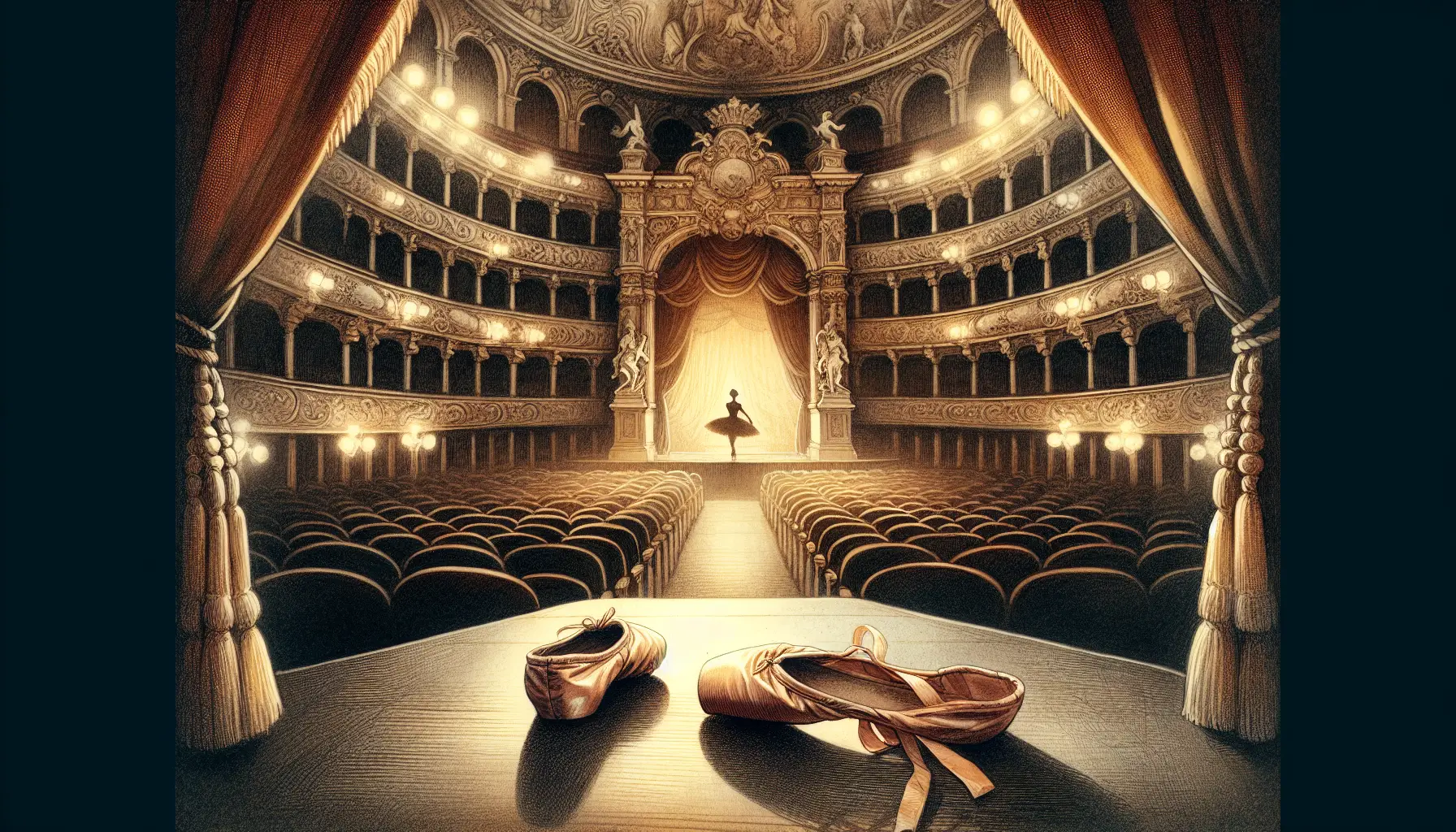
Within the constellation of ballet competitions, the illustrious European Ballet Grand Prix stands as a lighthouse, guiding young dancers through the stormy seas of professional dance. Established in Vienna in 2017, this event has quickly become a beacon for those aspiring to etch their names in dance history.
Annually held in March, the European Ballet Grand Prix opens its doors to a global cohort of dancers aged 7-26, providing them with a stage to display their passion and prowess before an international audience.
Its reputation as one of the key annual ballet competitions is not merely due to the caliber of its contestants but also to its commitment to uncovering and supporting the artistic potential of its participants beyond the competition itself. This noble pursuit has etched the European Ballet Grand Prix into the heart of the ballet community, offering a platform that transcends borders and unites dancers in their shared love for the art form.
The Grand Stage of Vienna
Vienna, a city that has been a key cultural hub in dance for centuries, provides a regal backdrop for the European Ballet Grand Prix. Its historical connection to ballet, with a legacy of composers and choreographers who have shaped the art form, makes it an enchanting venue for such a prestigious event.
As dancers from around the world gather in this cultural heartland of Austria, they are enveloped by an atmosphere that resonates with the grand tradition of European dance.
The vibrancy of Vienna’s arts community, intertwined with historical landmarks and renowned theaters, elevates the experience for artists and audiences, reinforcing the city’s status as a prestigious stage for international ballet competitions. With sustained investment in cultural events, Vienna remains a place where the arts thrive, ensuring its vital role in the global ballet community.
A Stepping Stone for Professional Careers
The European Ballet Grand Prix is more than a competition; it is a crucible where professional dance careers are forged. Dancers who grace its stage stand to win more than applause; scholarships, selections for various events, and professional engagements are all within reach for those who excel as Principal Dancers.
The story of Angel Corella, who became a Principal Dancer with the American Ballet Theatre after being discovered at a similar international ballet competition, is a testament to the transformative power these acclaimed events can wield.
The trajectory from participant to Principal Dancer in acclaimed companies is a well-trodden path for winners of ballet competitions, highlighting the significance of events like the European Ballet Grand Prix in shaping the future of dance. For young dancers, this platform is not just a stage but a gateway to a world of artistic opportunity and professional fulfillment.
Scholarships and Opportunities
Participation in the European Ballet Grand Prix can catalyze career advancement, opening doors to a realm brimming with possibilities. One of the most coveted of these is the chance to perform alongside renowned international ballet guests.
This rare opportunity can propel dancers into the spotlight and garner the attention of the ballet community’s luminaries. This invaluable exposure fosters connections that can accelerate a dancer’s journey to professional stardom.
The competition is more than just a battle for accolades; it is fertile ground for growth, a place where dancers can earn scholarships and open their horizons to the rich tapestry of the global ballet scene. It is an emblem of hope and a beacon for those who aspire to reach the zenith of artistic dance artistry.
Celebrating New Talents: First-Time Competitors at the Ballet Grand Prix
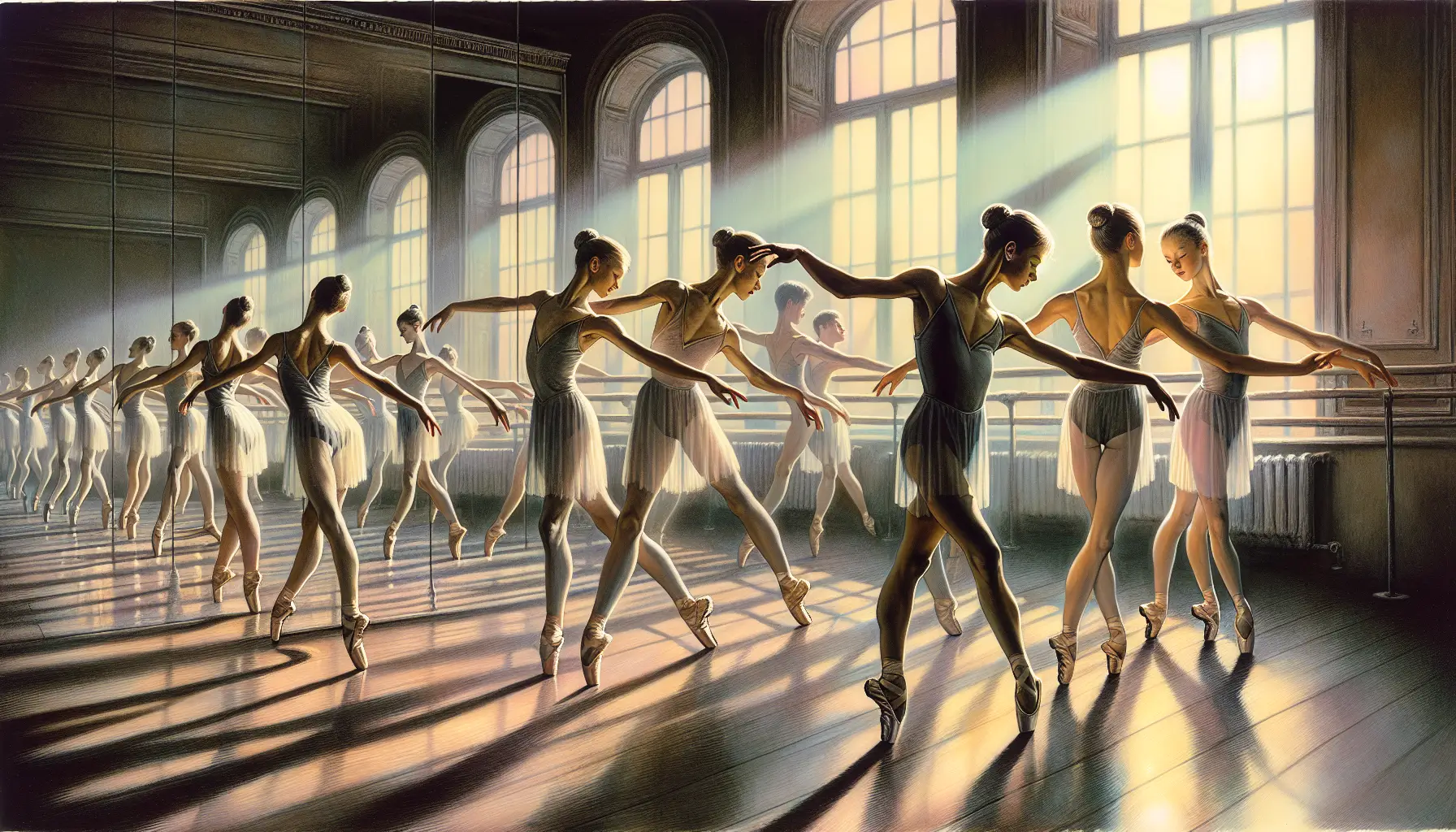
Stepping into the European Ballet Grand Prix arena for the first time is a rite of passage marked by a whirlwind of emotions. Young dancers find themselves amidst a blend of excitement and trepidation, sharing the stage with some of the most skilled artists in the ballet world, creating invaluable networking opportunities. This crucible of competition is a transformative journey, offering personal growth beyond the footlights.
The collaborative spirit that permeates the air as choreographers and dancers unite is a learning experience. This synergy exposes participants to various dance styles and cooperative partners, helping them evolve as artists and individuals. For novices, the ballet Grand Prix competition is not just a competition; it’s a celebration of new talent and a harbinger of the future of dance.
Preparing for the Spotlight
Preparation for the European Ballet Grand Prix is a meticulous endeavor, where choreography is carefully tailored to the dancer’s unique abilities and emotional resonance. It’s a symphony of physical and mental readiness, where securing ample rest and following a strategic nutrition plan are pivotal in ensuring peak performance. With the spotlight looming overhead, dancers focus on honing their craft, ensuring their movements speak volumes on the grand stage.
A dancer’s regimen before a performance includes:
- Managing sleep and ensuring adequate rest
- Maintaining a balanced and nutritious diet
- Engaging in stretching and warm-up exercises
- Practicing dance routines and techniques
- Taking time for mental relaxation and focus
By following these practices, dancers fortify their resilience against the rigors of competition, setting the stage for a physically and artistically impressive performance held with grace and determination.
Overcoming Stage Fright
The specter of performance anxiety is a familiar adversary for many dancers, manifesting through a myriad of symptoms that can range from negative thoughts to physical sickness. To conquer this foe, dancers employ an arsenal of techniques such as:
- positive visualization
- deep breathing exercises
- affirmations
- meditation
- progressive muscle relaxation
These techniques foster a sense of calm and confidence. The creation of visual mood boards serves as a beacon of tranquility, guiding them toward their center in the face of overwhelming pressure.
A camaraderie often blossoms among first-time competitors, supported by a mutual understanding that many are navigating the same tumultuous emotions. This solidarity is a powerful antidote to stage fright, fostering a sense of community that encourages dancers to focus on their shared passion rather than the competitive aspect of the event.
In this supportive embrace, dancers find the strength to rise above their fears and deliver performances that resonate with grace and poise.
The Fabric of Dance: Creating Works for Competition
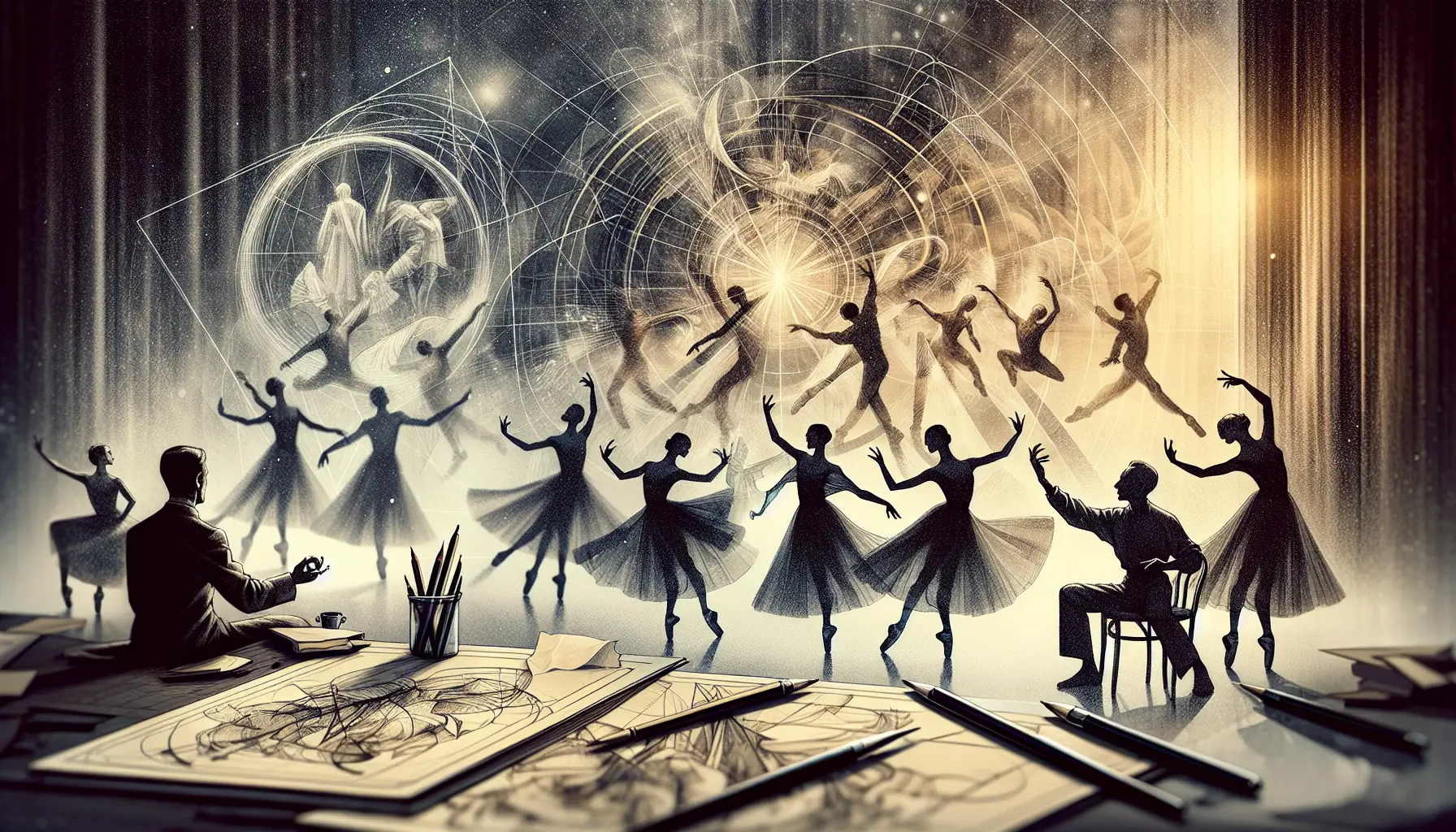
The journey to the European Ballet Grand Prix is paved with creativity and collaboration as choreographers and dancers weave together the tapestry of their performances. This artistic alchemy involves conceiving choreography and designing innovative costumes that captivate both the audience and judges. It’s a dance between resourcefulness and innovation, especially for those embarking on their first ballet grand prix journey.
Creating original works for ballet competitions is a testament to the dedication of time and artistry that dancers and choreographers pour into every step and stitch. It’s a process that requires vision, precision, and a deep understanding of the narrative that they wish to convey through movement and attire.
Choreographic Challenges
Crafting choreography for the European Ballet Grand Prix involves:
- Composing a symphony where every movement harmonizes with the music and reflects the dancer’s emotional landscape
- Blending technical skill with the fluidity of full-body expression
- Ensuring that each gesture resonates with the story being told
- I am capturing the judges’ attention with nuances of technique, musicality, and the ability to convey the piece’s essence through movement.
While adhering to the competition’s framework, choreographers must navigate diverse approaches to unearth what best complements the dancer’s style. This balancing act between innovation and tradition is a hallmark of successful choreography that leaves an indelible mark on the hearts and minds of the audience.
From Studio to Stage
The metamorphosis of a dance piece from conception to competition is dynamic and demanding. Choreographers and dancers collaborate closely, fine-tuning every aspect of the performance, from the choice of music to the intricacies of space and costume.
The rehearsal space becomes a crucible where dancers hone their skills, navigating complex sequences and adapting to the physical demands accompanying the journey to the stage.
As the competition approaches, the piece undergoes a series of refinements shaped by the time limitations and the stage’s dimensions. It’s a testament to the dancers’ adaptability and resilience, who must reconcile their artistic vision with the practicalities of performance.
The final test comes with the technical runs, where lights and sounds converge to create the environment where the dancers must compete to shine.
A Yearly Spectacle: Recurring Ballet Competitions Across Europe

The European Ballet Grand Prix is but one star in the vast galaxy of ballet competitions that light up Europe’s cultural calendar. These annual events are not just spectacles of dance; they are instrumental in discovering new talent and offering young dancers a launchpad for their professional aspirations.
From the artistic haven of Paris to the historic stages of Helsinki, each competition weaves its narrative into the fabric of ballet’s evolution, fostering and celebrating the art form internationally.
These recurring ballet competitions are cornerstones in the careers of many dancers, providing them with their first opportunity to compete, connect, showcase their talent, and be recognized for their dedication and skill.
As each year unfolds, Europe’s commitment to the tradition and progression of ballet is reaffirmed, nurturing the next generation of artists who will carry the legacy forward.
Mapping the Circuit
The circuit of annual ballet competitions in Europe is a rich tapestry of events, each with unique characteristics and contributions to the dance community. The Varna International Ballet Competition in Bulgaria, the Prix de Lausanne in Switzerland, and the Helsinki International Ballet Competition in Finland are notable examples, each opening its stages and issuing an open call to young ballet students worldwide.
These competitions highlight the diversity and richness of ballet talent across the continent, celebrating the artistry and technical prowess of dancers of various ages.
Other significant events include the Vaganova Prix in Saint Petersburg, Arabesque in Perm, and the Genée Ballet Competition, which often occurs in Commonwealth countries.
Additionally, each year, the European Broadcasting Union holds a competition to crown the European Dancer of the Year, further illustrating the variety and vitality of the European ballet competition scene.
Highlights from Previous Years
The annals of ballet competitions are filled with stories of triumph and memorable performances that have left indelible marks on audiences and judges alike. One such highlight is the victory of a Polish duo, whose exceptional pas de deux captured first prize and etched their names into the competition’s history.
In another notable moment, a female dancer at the Youth America Grand Prix delivered a technically powerful performance that electrified the audience despite not advancing in the competition.
The Youth America Grand Prix has showcased the diversity of the ballet world, with winners hailing from many nations, reflecting the international flavor of ballet competitions akin to a United Nations roll call.
These highlights from previous years serve as both inspiration and testament to the competitive spirit and artistic excellence that define the international ballet competition circuit.
How to Follow and Support the Art of Ballet Competitions
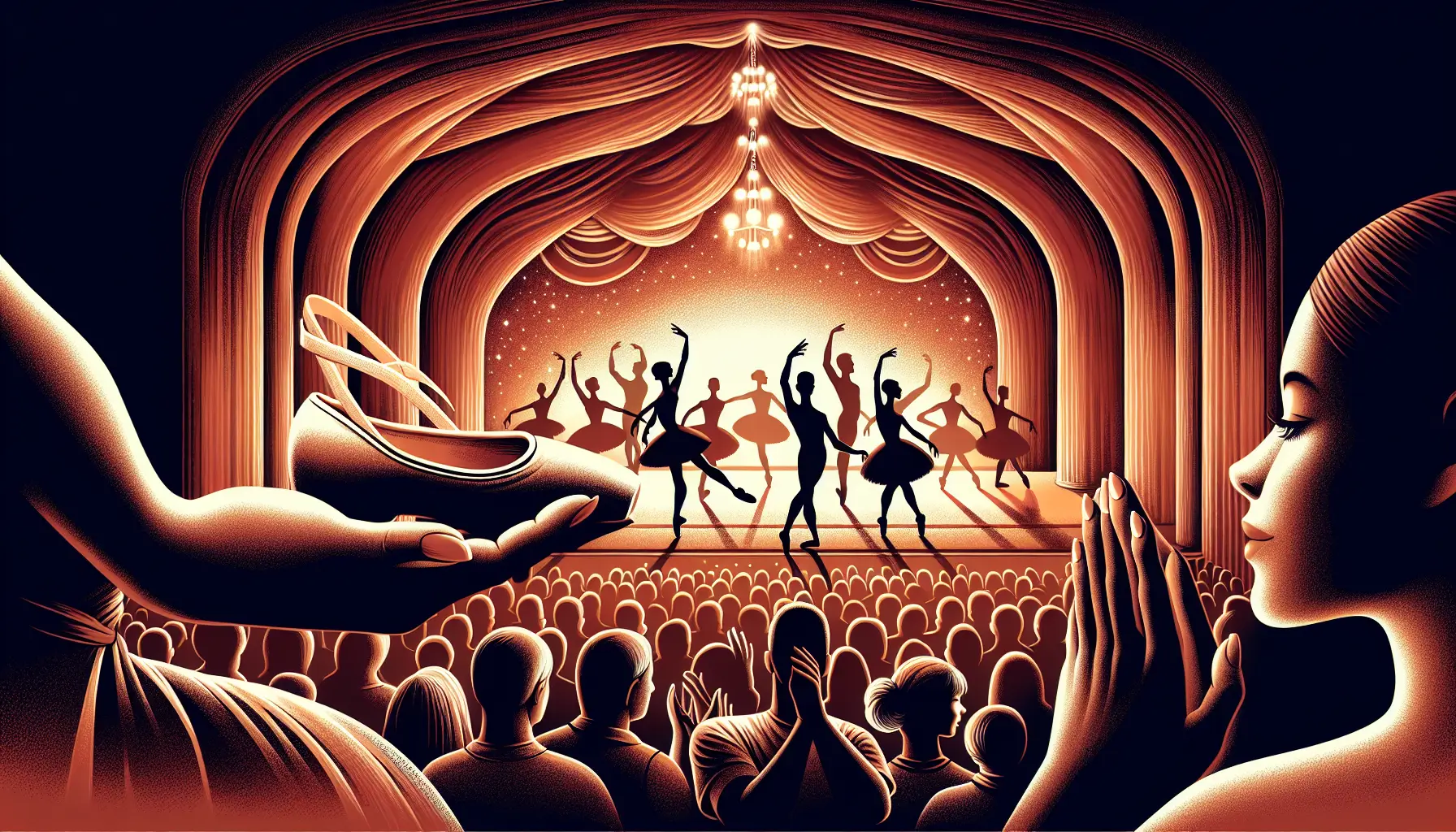
For those enchanted by the grace and athleticism of ballet, following and supporting ballet competitions is a way to connect with the pulsating heart of this cultural phenomenon. Enthusiasts can immerse themselves in the excitement of live performances by attending ballet competitions here, with event details and ticket information readily available on competition websites.
This participation enriches the individual’s dance experience and bolsters the events themselves, lending vibrancy and energy to the event and the atmosphere that fuels the dancers’ performances.
Becoming a Patron of Dance
The support of patrons is the lifeblood of the ballet community, ensuring that the art form continues to thrive and evolve. Individuals play a crucial role in sustaining the creative endeavors that bring ballet to life on the stage by financially supporting dancers and companies. In this way, the art of ballet is supported by its dedicated patrons.
This patronage is a commitment to the preservation and growth of ballet, enabling dancers to pursue their artistic passions and share their talents with the world.
Staying Updated with Results and News
Official competition websites are a treasure trove of information for those who wish to stay attuned to the latest developments in ballet competitions. These digital platforms offer up-to-date results, list winners, and provide insights into notable events, ensuring that enthusiasts have access to the most current and accurate competition information.
By visiting these websites, followers can trace and follow the trajectories of their favorite dancers and remain informed about the outcomes and highlights of each competition.
Summary
As the final notes of a grand pas de deux linger in the air, so does the impact of Europe’s ballet competitions on the dance world. These events are more than mere showcases of talent; they are incubators of future stars, platforms for artistic expression, and celebrations of a tradition that continues to enchant audiences worldwide.
From the nurturing stages of the European Ballet Grand Prix to the illustrious circuits that crisscross the continent, ballet competitions are a testament to the resilience, passion, and dedication of both dancers and choreographers.
We hope this guide has given you a glimpse into the vibrant and competitive ballet world and inspired you to engage with this extraordinary art form. Whether by attending performances, supporting dancers, using scholarships, or simply staying informed, your participation helps create and sustain the beauty and vitality of ballet. Let us continue to applaud the grace and athleticism that define this exquisite dance, and may we always cherish the stories told through the language of movement.
Frequently Asked Questions
What age range do the European Ballet Grand Prix competitions cater to?
The European Ballet Grand Prix competitions cater to young dancers aged 7 to 26, offering a platform for a wide range of budding talent.
How can participation in the European Ballet Grand Prix benefit a dancer’s career?
Participating in the European Ballet Grand Prix can benefit a dancer’s career by providing opportunities to compete for scholarships, professional engagements, and valuable exposure through performing alongside international ballet guests. These opportunities can propel a dancer’s professional career forward.
Are there specific strategies that dancers use to overcome stage fright?
Dancers use positive visualization, deep breathing, creating visual mood boards, and fostering a supportive community among peers to overcome stage fright. These strategies help build confidence and calmness before performing.
Can I follow the results of ballet competitions if I’m unable to attend?
Yes, you can follow the results of ballet competitions on official competition websites for up-to-date information on winners and notable events.
What makes the European Ballet Grand Prix unique among other ballet competitions?
The European Ballet Grand Prix is unique in its focus on nurturing artistic potential beyond the competition, offering opportunities to perform with esteemed ballet guests and giving scholarships to launch professional careers for selected dancers.



